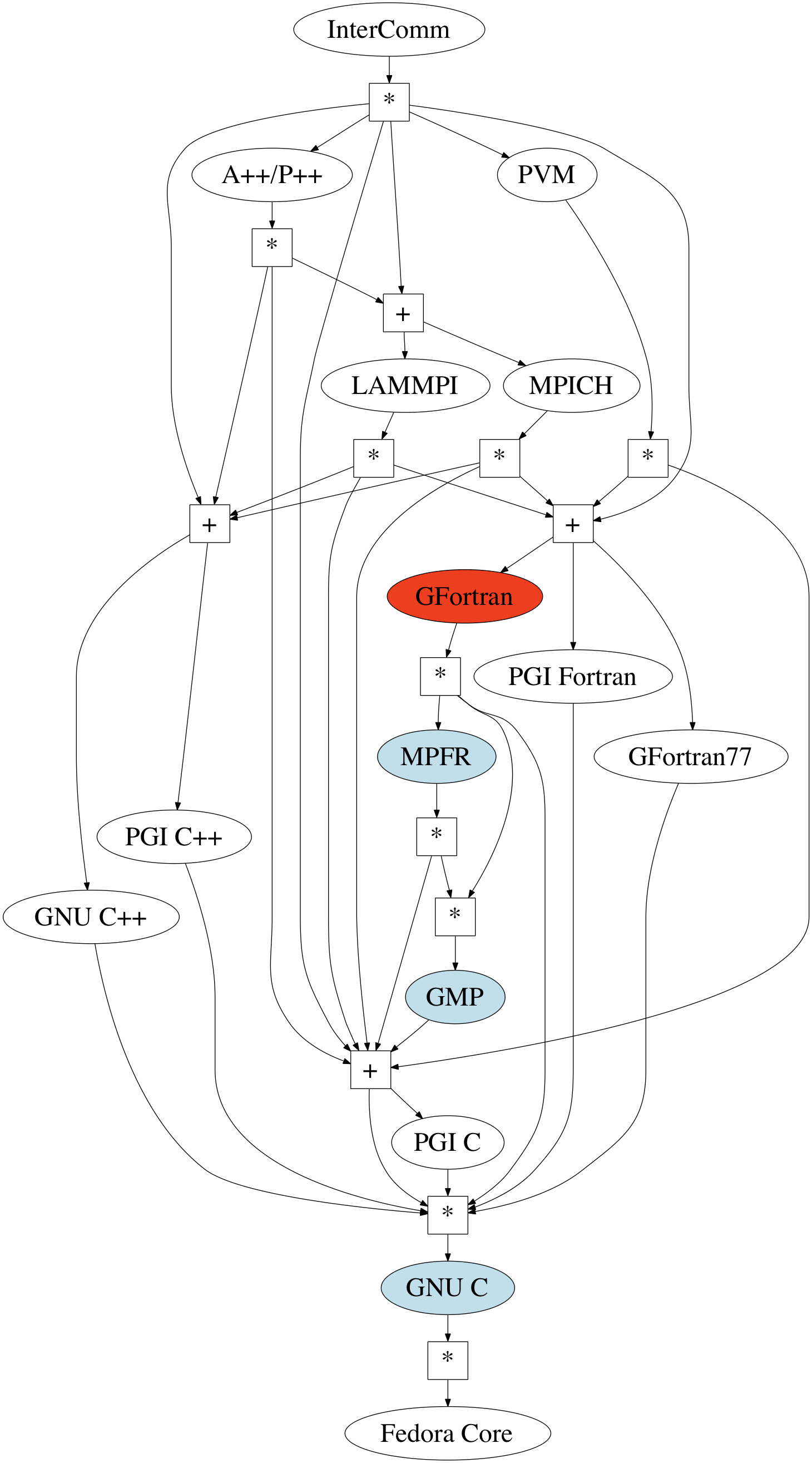Principle Investigators
Alan Sussman, Ph.D.
Adam Porter, Ph.D.
Atif Memon, Ph.D.
Ilchul Yoon, Ph.D.
Teng Long, Ph.D. student
Related Information
Publication
List
|
 Overall Project
Description Overall Project
Description
Modern component-based systems are typically composed of
multiple components, where each component can have multiple
versions, evolves over time, and may be developed by independent
groups of developers. Since each possible combination of the
components and their versions may be realized on an end-user's
machine, testing the compatibility of multi-component based
systems on top of possible field configurations is very
important to improve system quality, and also to
rationally manage support activities.
However, the large number of potential field
configurations makes it very difficult for developers to perform
large-scale
compatibility testing, so developers often pare
down the test set to a small number of popular or default
configurations and also must customize the configurations
manually.
This project aims at developing
methods and a tool called Rachet to support large-scale
compatibility testing of evolving component-based
systems. The research has so far focused on testing for correct
builds of components in various configurations. Rachet
features include:
- Compatibility testing of a system build
We regard a system build as a set of components and
associated versions that a developer wants to consider as part of the
configuration space of a component-based system. We have developed
(1) a formal modeling scheme to encode the entire
configuration space of the system, (2) a method to produce a
reduced set of configurations compared to
the exhaustive set of configurations, via a directed sampling approach,
that has been shown to effectively identify
compatibilities between components in the model , and (3) methods
to test
configurations on top of virtual machines via
hardware virtualization technology.
- Compatibility testing of a sequence of system
builds
In order to accommodate component evolution, we have developed
(1) algorithms to compute differences in component
compatibility between system builds, for a sequence of builds over
time, (2)
a formal test adequacy criterion based on covering the
differences, and (3) cache-aware configuration sampling and
testing methods that attempt to reuse effort from previous
testing sessions.
- Preference-driven compatibility testing
Developers often have different levels of interest across
components and their versions, and also the time and resource
available for compatibility testing can be limited. Under these
conditions, it is necessary to prioritize the test order of
configurations. We have therefore developed a method by
which developers can easily specify a preference order for
components and their versions. Our prioritization mechanism
computes the importance of each configuration based on the
specified preferences, and then tests configurations in user
preference order.
 Modeling the System
Configuration Space and Generating Configurations Modeling the System
Configuration Space and Generating Configurations
An Annotated Component Dependency
Model (ACDM) encodes the entire configuration space for a
system. The model has two parts: a Component Dependency Graph
(CDG) and Annotations (Ann). A CDG is a directed
acyclic graph
used to specify dependencies between components. Ann is
used to specify component versions and constraints between
components. A CDG has two types of nodes: component nodes (shown as
circles) and relation nodes (shown as rectangles). In a CDG, if there
is a path between a component node (say c1) to another
component (say c2), and if the path does not contain any
other component node, we say that c1 directly depends
on c2. (e.g., the relation between GFortran and the other
blue-colored components in Figure 1.)
We identify all direct
dependency relationships between components and for each
relationship create concrete instantiations called
DD-instances with versions of components in the
relationship. We have developed an algorithm that generates a set
of configurations that ensures that each
DD-instance is tested by at least one configuration.

<Figure 1. CDG for InterComm System>
 Test Plan Test Plan
Each configuration contains a
sequence of DD-instances, where each DD-instance encode a component
version and a set of other component versions on which the component
directly depends. From the observation that configurations often
share common sub-sequences, we combine all configurations into a single
prefix tree called a test plan. The test plan for the
InterComm
component is
shown in Figure 2. The test plan is executed by
dispatching configurations to multiple virtual machines running on a
compute grid.
 <Figure 2. InterComm test plan and
its execution employing 8 client machines>
<Figure 2. InterComm test plan and
its execution employing 8 client machines>  System
Architecture System
Architecture
Our approach is realized in a tool called Rachet, which is
implemented with a client/server architecture as illustrated in Figure
3.
<Figure 3. Rachet
Architecture>
 Compatibility Results
for Real-World Systems Compatibility Results
for Real-World Systems
The Rachet process has been extensively applied to two scientific
middlware components, InterComm and PETSc. For the process, we employed up
to 4 versions for components in the CDG in Figure 1. We then generated and
tested configurations to test all inter-component compatibilitie. We
discovered several failure patterns from the test, and conveyed that
information to the developers of each package.
Rachet has only been applied for components in the high-performance
computing domain. However, we also plan to apply the process to components
from other domains, and have started the process for the
Sugar interface of the OLPC (One Laptop Per Child) project.
|













